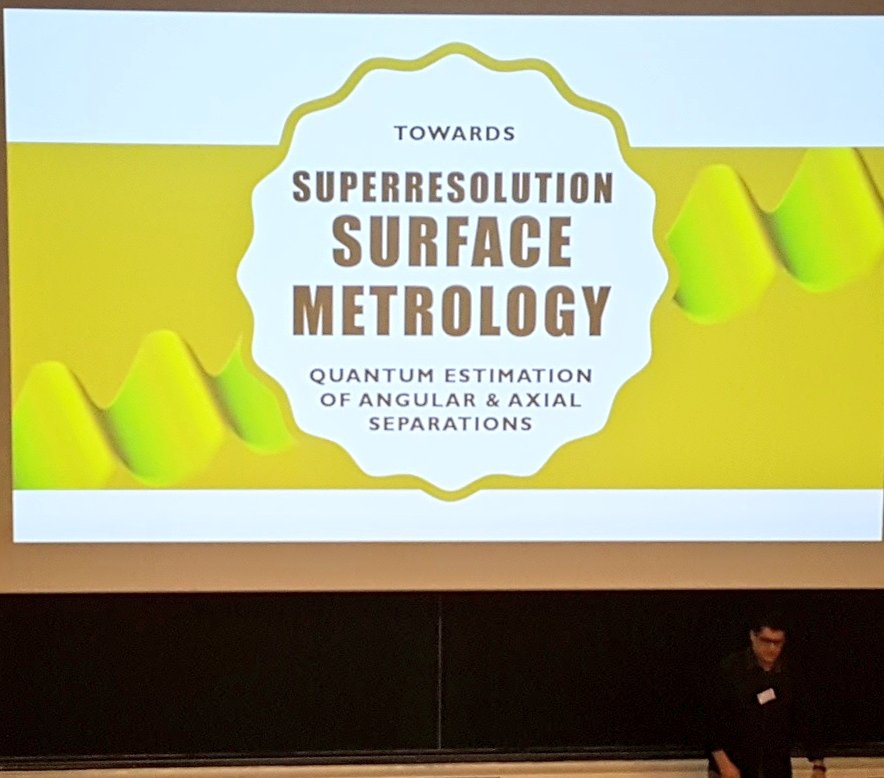Now at #MCQS, @GerardoAdesso from @UniofNottingham on ""Towards superresolution surface metrology: Quantum estimation of of angular & axial separations"
#LTQI #MCQS
#LTQI #MCQS

@GerardoAdesso @UniofNottingham .@GerardoAdesso teh curs of Raygleigh criterion for high resolution imaging: “two point sources can be resolved by direct imaging if their separation is at least of the order of the width of their point spread function in the image plane”
#LTQI #MCQS
#LTQI #MCQS
@GerardoAdesso @UniofNottingham .@GerardoAdesso : But is this the ultimate limit? We need quantum estimation theory, and the quantum Cramér-Rao bound for that. #LTQI #MCQS
@GerardoAdesso @UniofNottingham .@GerardoAdesso : This lead to show that for two weak incoherent point sources, there is no resolution limit and the rayleigh curse is lifted: see doi.org/10.1103/PhysRe… . There are even proof of principle experimental demonstrations.
#LTQI #MCQS
#LTQI #MCQS
.@GerardoAdesso here ( arxiv.org/abs/1805.04116 ) looks at what happens when the sources are on different object planes.
The angular separation s and axial separation p still look good (sub-Rayleigh), but one should check if they are compatible
#LTQI #MCQS
The angular separation s and axial separation p still look good (sub-Rayleigh), but one should check if they are compatible
#LTQI #MCQS
@GerardoAdesso .@GerardoAdesso : They are compatible, at least in the regime s,p → 0.
Current work of the community to actually implement near optimal measurements, either with spatial mode demultiplexing or interferometry of inverted images
#LTQI #MCQS
Current work of the community to actually implement near optimal measurements, either with spatial mode demultiplexing or interferometry of inverted images
#LTQI #MCQS
@GerardoAdesso .@GerardoAdesso : It can be applied e.g. to depth mapping.
@GerardoAdesso @UniofNottingham .@GerardoAdesso’s talk on ""Towards superresolution surface metrology: Quantum estimation of of angular & axial separations" is available here
#LTQI #MCQS
#LTQI #MCQS
• • •
Missing some Tweet in this thread? You can try to
force a refresh




